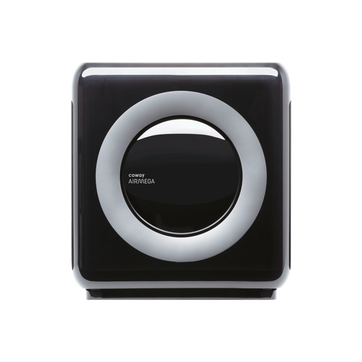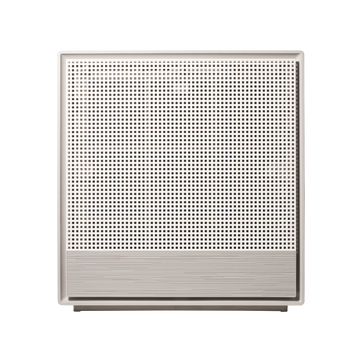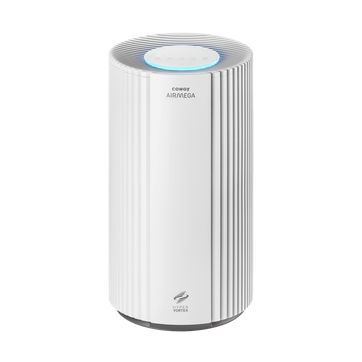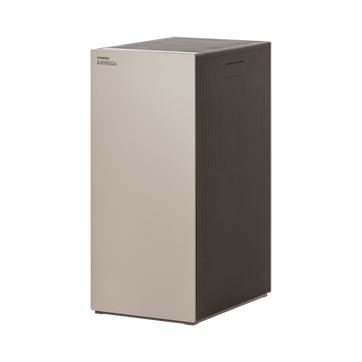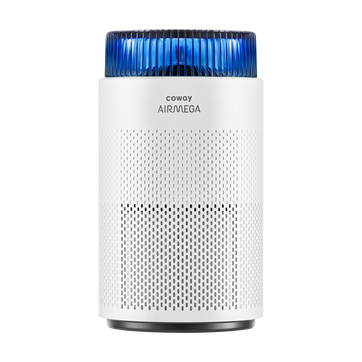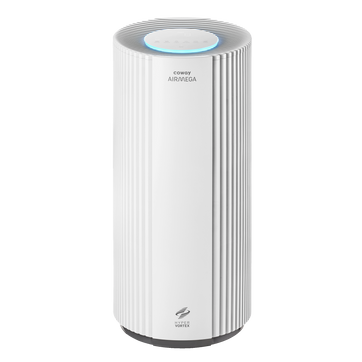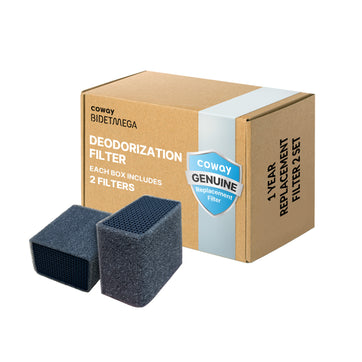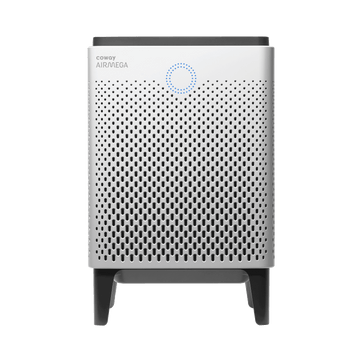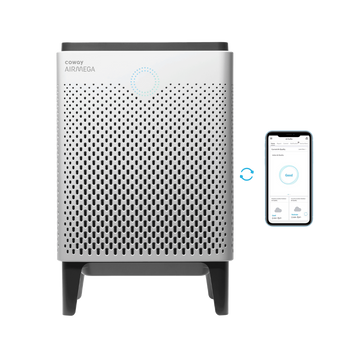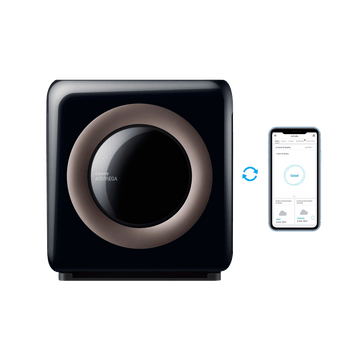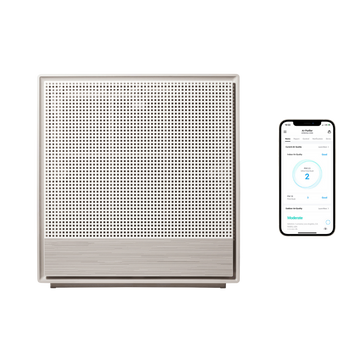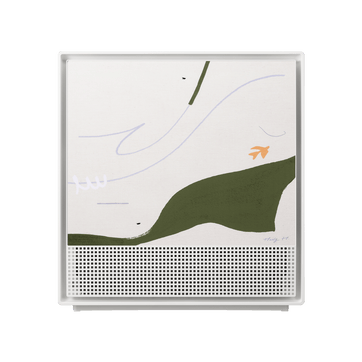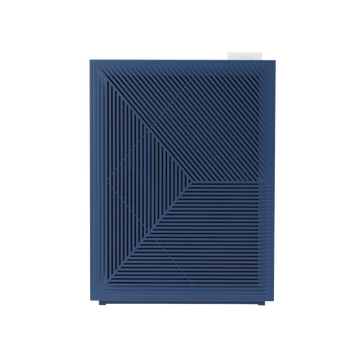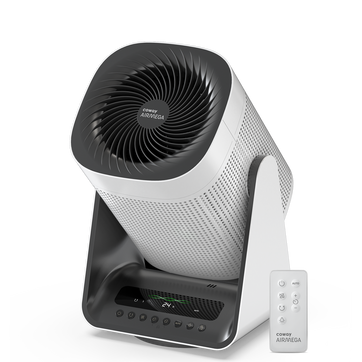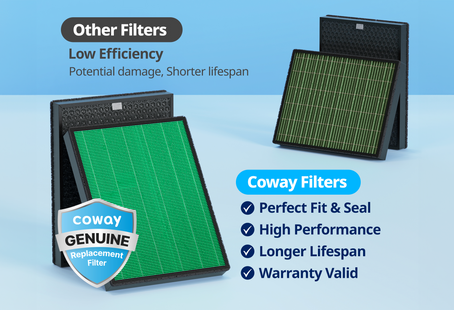
What’s Spooky? VOCs! All About The Season’s Scariest Danger
Your kids can’t wait for the haunted houses and trick-or-treat fun. But the real fright this season may be hiding in your living room, unseen, odorless, and quietly affecting your health. Volatile organic compounds, or VOCs, drift through the air inside our homes all year long. These airborne chemicals can cause headaches, fatigue, and more serious long-term health risks.
The good news is that you can identify and address these invisible villains, taking control of your indoor air quality with a bit of awareness and the right air purification technology.
What Are VOCs and Why Do They Matter
Volatile organic compounds are everyday chemicals that evaporate easily at room temperature. When liquids or solids containing VOCs release gas molecules into the air, those gases linger and mix with other airborne particles, contributing to poor indoor air quality.
The most common VOCs, such as formaldehyde, benzene, xylene, acetone, and toluene, originate from familiar products that you likely use every day. These compounds are not inherently “evil,” but when concentrated in an enclosed space, they can cause irritation and even long-term health effects.
Studies show that indoor air often contains up to ten times more VOCs than outdoor air, making homes, offices, and schools a primary source of exposure.
Familiar Sources of VOCs in Everyday Life
You might think pollution stays outdoors, but VOCs come from the most ordinary household items.
Household Products and Cleaning Supplies
Detergents, disinfectants, and air fresheners often use solvents or artificial fragrances that release VOCs when sprayed or wiped on surfaces. Even “clean” smells can mask a cocktail of chemical compounds.
Paints, Adhesives, and Building Materials
Fresh paint, varnish, or vinyl flooring emits VOCs for weeks as it cures. Composite wood, upholstery foam, and glue from furniture or cabinetry also release chemicals slowly over time.
Air Fresheners and Cosmetics
Perfumes, hairsprays, nail polish removers, and scented candles all contribute to indoor air pollutants. The scent you associate with cleanliness or comfort may actually signal volatile organic compounds lingering in the air.
Combustion and Stored Fuels
Wood burners, tobacco smoke, and stored gasoline are major contributors to indoor VOC levels. Even a pilot light or poorly vented stove can increase exposure.
Over time, these familiar sources accumulate, especially in homes with limited ventilation, creating an invisible mix of harmful pollutants that can irritate or inflame your respiratory system.
How VOCs Affect Your Health
Short-Term Reactions
For some people, especially those with asthma or allergies, VOCs cause immediate irritation. Symptoms include watery eyes, coughing, wheezing, or shortness of breath. Headaches, dizziness, or nausea are also common signs of short-term exposure.
Long-Term Health Problems
Continuous exposure to VOCs may damage the liver, kidneys, and central nervous system. Some, such as formaldehyde and benzene, are classified as carcinogens. Chronic low-level exposure can result in fatigue, difficulty concentrating, or sleep disturbances, subtle signs that your air quality might be affecting your well-being.
Why You Can’t Always Smell the Problem
Relying on scent is misleading. While some VOCs have a strong odor, others are odorless. And after living with them for a while, your sense of smell adapts. The air in your home may feel “normal” even when chemical levels are elevated.
Measuring and Monitoring Indoor Air Quality
You don’t have to guess whether your home’s air is healthy. Today’s air quality monitors and smart air purifiers can provide real-time feedback.
Understanding Air Quality Data
Most modern systems measure particulate matter (PM2.5), VOC concentration, and other key indicators. Continuous monitoring reveals how activities such as cleaning products, cooking, or opening windows impact your indoor air quality.
Smart Devices That Detect VOCs
Many of the best air purifiers feature sensors that adjust automatically based on pollution levels. This ensures your purifier increases fan speed during peak activity, such as after you spray cleaner or cook dinner, then quietly returns to energy-saving mode.
Knowing What “Clean” Means
An optimal indoor environment features minimal VOCs, low dust and pollen levels, and consistent air circulation. Real-time displays and smartphone apps make it easy to stay informed and confident about the air quality data inside your home.
Four Simple Steps to Reduce VOCs
Awareness is the first step toward cleaner air. Here’s how to make your home safer, one small change at a time.
1. Study the Risks and Sources
Understand what’s releasing VOCs in your home. Read product labels carefully, especially cleaning supplies and cosmetics. If ingredients include solvents or artificial scents, they likely emit VOCs.
2. Swap for Safer Alternatives
Replace harsh products with VOC-free or natural options. Simple combinations, such as vinegar, lemon juice, and baking soda, can replace many synthetic cleaners without compromising results.
3. Shop Smart
Choose items labeled “low-VOC” or “no-VOC.” When painting or remodeling, look for building materials and adhesives specifically designed for improved indoor air quality.
4. Store Safely and Ventilate Regularly
Store paints, fuels, and other chemicals outside living areas. Keep them tightly sealed and away from heat sources. Enhance ventilation by using exhaust fans, opening windows, or installing air purifiers that continuously circulate fresh air.
Natural Ways to Improve Air Quality
Sometimes, the simplest solutions make the most significant difference.
Open Windows Strategically
A few minutes of cross-ventilation each day helps flush out gas molecules and refresh indoor air. Aim to ventilate when outdoor air quality is good, often in the morning or evening.
Add Houseplants That Filter VOCs
Plants like peace lilies, spider plants, and Boston ferns can adsorb VOCs through their leaves and roots. While they’re not a replacement for activated carbon filters, they support overall freshness and humidity balance.
Maintain Balanced Humidity
Too much humidity allows mold and mildew to thrive, while too little can dry out respiratory passages. Keep indoor humidity between 40–50 percent to support healthy air and efficient filtration technology.
Why Air Purifiers Are a Smart Option for VOC Removal
Even with excellent ventilation and green cleaning practices, VOCs can persist. A high-performance VOC air purifier provides consistent, automated protection.
How Filtration Technology Works
Modern purifiers use a layered defense system:
-
The pre-filter captures large particles like dust and pet dander.
-
True HEPA filter traps pollen, fine dust, and microscopic pollutants.
-
Activated carbon filter adsorbs VOC gases and odors at the molecular level.
Together, these layers remove both particles and gases, leaving your air cleaner and fresher.
How Activated Carbon Filters Capture Gas Molecules
The carbon inside these filters is porous, creating millions of tiny pockets that trap VOCs through adsorption. Unlike simple fabric filters, activated carbon filters neutralize gases like acetaldehyde, nitrogen dioxide, and sulfur dioxide that can’t be caught by HEPA alone.
Why Some Air Purifiers Handle VOCs Better
Not all purifiers are designed for gas removal. Many models focus solely on dust or pollen. For true VOC reduction, look for systems that combine HEPA filtration with a thick layer of activated carbon and have verified performance tests for chemical adsorption.
The Coway Difference: Science Meets Wellness
Coway’s approach to air purification begins with one mission: to make every breath feel clean, comfortable, and effortless.
Bright, Quiet, and Highly Efficient Filtration
Coway air purifiers are built for precision. They constantly analyze air quality data, automatically adjust fan speed, and operate with significantly less noise than typical devices. With Eco Mode, your purifier pauses when the air is already clean, saving energy without sacrificing performance.
Designed for Every Room Size
Whether you live in a compact apartment or a large home, there’s a Coway model optimized for your recommended room size. High CADR ratings and large filtration areas ensure each unit refreshes the air multiple times per hour.
Tested and Trusted Performance
Each Coway purifier undergoes extensive testing processes to confirm filtration efficiency and safety. These devices have been recognized internationally for combining health, design, and innovation, earning their place among the best air purifiers available today.
How Coway Air Purifiers Remove VOCs
The Power of the Max2 Activated Carbon Filter
Coway’s Max2 filter combines a True HEPA filter and an activated carbon layer, a dual system proven to remove VOCs and other harmful pollutants efficiently. This design captures 99.999 percent of airborne particles and neutralizes gases that can otherwise slip through less advanced systems.
Real-Time VOC Detection
Every Coway unit features a smart sensor that measures air quality in real-time. When VOC levels rise, your purifier automatically increases fan speed to absorb them quickly, often restoring fresh air in just minutes, depending on room size.
Set-and-Forget Simplicity
Modes like Auto, Sleep, and Eco make operation effortless. You’ll breathe clean air around the clock without needing to manually adjust settings.
Easy Filter Replacement
Maintaining your purifier is simple. Coway’s replacement filters are designed for long life and quick replacement, ensuring optimal performance and low noise levels.
How Coway Compares to Other Air Purifiers
While other air purifiers may reduce dust or pet dander, Coway units are specifically engineered to target volatile organic compounds. The activated carbon, HEPA filtration, and smart-sensing system work together for comprehensive protection.
Advantages at a Glance
-
Dual filtration with True HEPA and activated carbon filters
-
Monitors and removes VOCs automatically
-
Whisper-quiet operation with multiple fan speeds
-
Proven through rigorous performance tests
-
Sleek, minimalist design that complements modern interiors
When it comes to choosing the best air purifier for your health and home, Coway offers a scientifically grounded, aesthetically refined solution.
The Science Behind Activated Carbon: Why It Works
Activated carbon undergoes a special heating process that significantly expands its surface area. Just one gram can have an area of over 32,000 square feet, making it ideal for trapping gas molecules that would otherwise pass through conventional filters.
As air passes through the carbon filters, VOCs stick to the surface through adsorption. Over time, this molecular trapping significantly reduces indoor air pollutants, making activated carbon the gold standard for VOC removal in both residential and industrial applications.
Caring for Your Purifier for Long-Term Protection
Keep your purifier at peak performance with regular care:
-
Replace the primary filter every 6 to 12 months.
-
Vacuum the pre-filter monthly to remove dust buildup.
-
Position your device centrally for optimal air circulation.
-
Keep doors and windows slightly open periodically to maintain a balanced exchange of outdoor air.
These small habits extend the life of your unit and maintain consistent protection from VOC exposure.
When to Upgrade Your Air Purifier
If your current device lacks an activated carbon filter, can’t display air quality data, or doesn’t automatically adjust fan speed, it may be time to upgrade. Choosing a purifier designed explicitly for VOC and gas removal ensures your investment truly protects your home’s air.
Breathe Easy and Fear Less This Season
Halloween is all about scary surprises, but your air shouldn’t be one of them. While VOCs hide in paints, cleaners, and even your favorite scented candle, you’re not powerless. Smart habits, thoughtful product choices, and the right VOC air purifier can turn your home into a sanctuary of clean, safe air.
Coway’s filtration technology combines intelligent sensors, activated carbon filters, and True HEPA performance to eliminate the unseen dangers that can harm your health.
This season, and every season, breathe with confidence.
Clean air, quietly protected by Coway.
Sources:
MN Department of Health Volatile Organic Compounds in Your Home - MN Dept. of Health.
EPA Volatile Organic Compounds' Impact on Indoor Air Quality | US EPA
Ion Science 10 Most Common VOCs Gases Found In Your Home! - Ion Science UK
Disclaimers
1Coway air purifiers have been proven to trap dust, pollen, dander, viruses and bacteria in the air based on KCL (Korea Conformity Laboratories) testing.They have been tested in a 30㎥ size chamber according to the Korea Air Cleaning Association standard (SPS-KACA 002-132:2022 Modified) to measure the 0.01㎛ size of particle removal rate. It was tested on maximum airflow speed in normal room temperature and humidity conditions. The performance may vary in the actual living environment of customers.
→ Tested with Airmega Aim, 50, 100, 150, 160, Tower AP-1216L, Mighty AP-1512HH, MightyS AP-1512HHS, 200M, Icon, IconS, 230, 240, 250, 250 Art, 250S, 300, 300S, 350, 400, 400S, 450, ProX
299.97% of viruses, bacteria, fungi and pollen were verified to be removed from the air for Coway air purifiers which have Green True HEPA™ filter applied based on the Japan Food Research Laboratories(JFRL) testing according to JEM 1467 standard.
→ Tested with Coway Airmega Mighty AP-1512HH, MightyS AP-1512HHS, 250, 250 Art, 250S, 300, 300S, 400, 400S
→ All tested by JFRL and received above result within below time.
4The concentration of ammonia, acetaldehyde and acetic acid were proven to be removed within 30 minutes by FCG Research Institute, Inc. Human Life Science Lab. It is not a demonstration result in the actual use space. Not all odors and gases may be supported. → Tested with Coway Airmega 150, 160, Mighty AP-1512HH, MightyS AP-1512HHS, 400, 400S
5The coverage area of the air purifier is based on an area where the air cleaner can make two air changes per hour (ACPH). An air change per hour translates to how many times an air purifier can clean an area, assuming the height of a ceiling to be 8 ft, in one hour. Therefore ** means two air changes per hour means that the cleaner can clean the area once every 30 minutes and * means air changes per hour means that the air purifier can clean the area once every 60 minutes.
10Terms and conditions apply. Discounts, including promotions, coupons, bundle discount and subscription discount, cannot be stacked on top of other coupons. During promotional periods, discount codes will not be able to be applied to orders. Promo codes may apply to products only—filters, accessories, and new products within 3 months of the release date are not included.
11Based on Coway R&D internal laboratory testing, activated carbon filtration was shown to remove up to 95% of ammonia odors within 40 minutes, and up to 99% of fecal odors within 20 minutes. Actual performance may vary depending on usage conditions.

